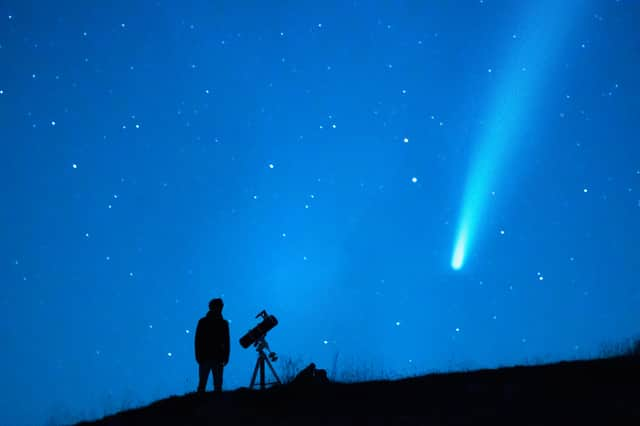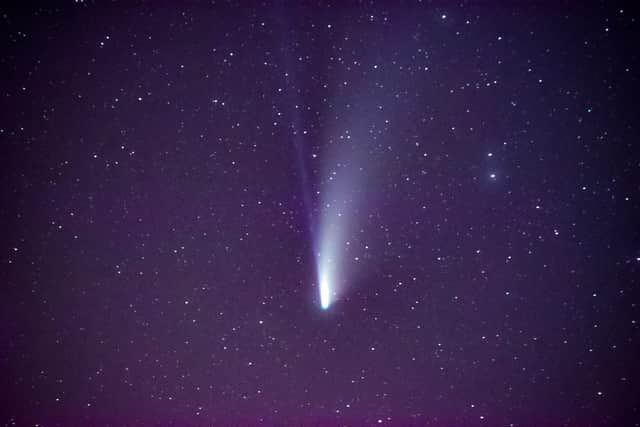Draconid Meteor Shower to peak this weekend - how to see it from the UK


Every October, the night sky is lit up by shooting stars from the Draconid Meteor Shower.
A meteor shower occurs when the earth travels through the clouds of debris emitted from a comet’s trail.
Advertisement
Hide AdAdvertisement
Hide AdThey can sometimes be spectacular events with dozens of shooting stars an hour.
So what can we expect to see from the Draconid Meteor Shower - and will the UK’s weather allow us to watch it?
What is the Draconid Meteor Shower?
The Draconid Meteor Shower comes from the trail of the 21P/ Giacobini-Zinner comet.
This comet was first discovered in 1900 by the astronomer Michel Giacobini before being found again by Ernst Zinner in 1913. According to Nasa, it orbits the sun every 6.6 years.
Advertisement
Hide AdAdvertisement
Hide AdThe Draconids get their name from the constellation they seem to originate from - in this case Draco, which is Latin for dragon.
But they are also sometimes known as the Giacobinids after the man who first discovered the comet.


Meteor showers are caused by particles of ice and rock - sometimes as small as a grain of sand - hitting the earth’s atmosphere.
Friction generated by this interaction gives off heat and light, creating streaks of light in the night sky as the particles burn up.
Advertisement
Hide AdAdvertisement
Hide AdWhile the Draconid Meteor Shower produced some of the most spectacular astronomical events of the 20th century, including a ‘meteor storm’ in 1933 when 500 meteors per minute were seen above Europe, the event hasn’t been especially vibrant in recent years.
According to the Royal Observatory at Greenwich, London, this is because the rate of meteors depends on which part of the comet’s trail the earth hits.
As the earth rarely comes close to the comet, the Draconid Meteor Shower is classified by Nasa as “weak”, with the space agency expecting 10 to 20 meteors per hour at its peak.
When is the Draconid Meteor Shower in 2021?
In 2021, the Draconid Meteor Shower will appear in the UK’s skies between 7 and 11 October.